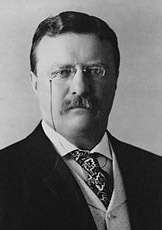Download your free grammar guide here.
Download your free grammar guide here.
What is a proper adjective?
What is a proper adjective?
- Home
- Parts of Speech
- Adjectives
- Proper Adjectives
Do you know what proper adjectives are? Today is the day you're going to learn about them! Let's start by reviewing adjectives.
Quick Refresher
Adjectives are words that describe nouns and pronouns.
happy baby, cold weather, green grass
Diagramming sentences makes it easy for us to see that adjectives modify nouns and pronouns. We diagram adjectives on slanted lines underneath the nouns or pronouns that they are modifying.

Newborn babies sleep quite often.
In this example, newborn is an adjective modifying the noun babies. It's easy to see that in the diagram because it goes below the word babies!
Proper Adjectives
Now that you know what adjectives are, let's explore the concept of proper adjectives. Proper adjectives are adjectives that are derived from proper nouns. That definition won't do you much good if you don't know what proper nouns are!
Proper nouns are nouns that name specific people, places, things, or ideas. Think of proper as meaning specific.
Proper Nouns
She lives in America.
I speak English.
Let's travel to Paris.
Notice that proper nouns always begin with a capital letter.
Proper adjectives are adjectives that are formed from proper nouns.
Most of them identify people, places, languages, or groups. Let's turn those proper nouns above into proper adjectives.
Proper Adjectives
He sells American cars.
I teach English grammar.
I love this Parisian scarf.
Notice that the underlined words are all describing nouns (that tells us that they are adjectives), and they're formed from proper nouns (that tells us that they are proper adjectives).
- American is describing the noun cars. It's formed from the proper noun America.
- English is describing the noun grammar. It's formed from the proper noun English.
- Parisian is describing the noun scarf. It's formed from the proper noun Paris.
Did you also happen to notice the capitalization of these adjectives? Usually, adjectives in the middle of a sentence would not be capitalized. But these adjectives are capitalized! Why? Because they're formed from proper nouns.
Proper adjectives begin with a capital letter.
Psst! Here's something interesting. Over time, proper adjectives can lose their capitalization if the adjective itself begins to overshadow the thing or person (the proper noun) that it originally referenced. Let's look at some fun examples of this!
We no longer capitalize the v in venetian blinds. At one time, venetian blinds, named after the Italian city of Venice, would have started with a capital v. However, people no longer associate venetian blinds with Venice, and so we use a lowercase v when writing venetian blinds. (The word Venetian would still be capitalized in other uses though.)
Do you have any teddy bears in your home? Teddy bear used to require a capital t because teddy bears were named after Theodore (Teddy) Roosevelt! We've lost the association with the former president, and we don't capitalize the t any longer.
 I love teddy bears.
I love teddy bears.The word chauvinistic is an adjective that can mean "excessively aggressive or patriotic." It used to require a capital c because chauvinistic is derived from the name of a French (Look! French is a proper adjective!) soldier named Nicolas Chauvin. Nicolas Chauvin is a legendary figure who fought during the Napoleonic Wars. As you might guess, legend has it that he was excessively patriotic.
The adjective gargantuan, meaning "enormous," used to require a capital g. The word gargantuan is derived from Gargantua, the name of a character in 16th-century French literature. Gargantua was a giant who had a huge appetite. We have all forgotten that this adjective used to refer to Gargantua, so now we don't capitalize the g.
The adjective quixotic means "exceedingly idealistic and impractical." It's not capitalized now, but it's derived from the Spanish novel Don Quixote.
There you have it. Now you know a little something about these kinds of adjectives, and you have some new fun facts under your belt.
If you'd like to teach or learn grammar the easy way—with sentence diagrams—check out our Get Smart Grammar Program.
It starts from the very beginning and teaches you grammar and sentence diagramming in easy, bite-size lessons.

Hello! I'm Elizabeth O'Brien, and my goal is to get you jazzed about grammar.
This is original content from https://www.english-grammar-revolution.com/proper-adjective.html
Our Free Guide Gives You A Fun Way
To Teach And Learn The Basics v

Elizabeth O'Brien is the creator of Grammar Revolution.
Her lessons are guaranteed to give you more confidence in your communication skills and make you smile. :)

